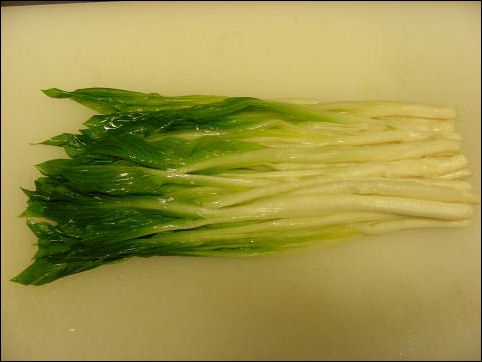Hosta recipes! archived
My hostas are right next to the front walk, and all the neighborhood dogs use them as a fire hydrant. I won't be eating any.
I used to plant nasturtiums among my hostas. Who knew they were garnish?
And they're also delicious raw in salads.
Spontaneous - you wash them. Do DO know that most of the produce grown in this country is grown outside...
Spontaneous - you wash them. Do DO know that most of the produce grown in this country is grown outside...
Posted By: scullyAnd they're also delicious raw in salads.Ask me how I know..... :rolling: :swingin: :thumbup:
You can not reply as this discussion is Closed!
Rentals
Employment Wanted
Latest Jobs
Employment Wanted
-
Apr 19, 2024 at 9:42am
-
Amazing Housecleaning available call! (201) 889-5521
Apr 18, 2024 at 12:40pm
-
Apr 18, 2024 at 11:17am
-
Apr 17, 2024 at 6:35pm
-
Administrative Assistant/REMOTE-Part Time
Apr 17, 2024 at 1:19pm
Help Wanted
-
NPF509 FT Nanny/Family Assistant for Twins (ASAP Flex)
Apr 19, 2024 at 12:38pm
-
CF582 FT Nanny/Family Assistant for 2 (Late May Start)
Apr 19, 2024 at 12:18pm
-
SF5001 FT Nanny for 2 (ASAP Start)
Apr 19, 2024 at 12:02pm
-
Full-Time / Part Time Nanny Needed
Apr 19, 2024 at 11:51am
-
MF519 PT Nanny for 1 (ASAP Start)
Apr 18, 2024 at 5:23pm















As I explained in my "Hosta vs Giboshi" page, hosta, H. montana to be exact, is called "urui" (u - ru - i) and consumed by Japanese people as a delicacy in the spring. Recently, Yuki Urui or "Snow Urui" grown in Mogami, Yamagata Prefecture, Japan, is getting its popularity. As its name explains, it is white and tender -- tender enough for fresh salad. They move the hostas to a greenhouse late in the fall, and keep the dormant hostas covered in the winter. This way, the hostas emerge white and very tender. Here is a link to the local government web site introducing Yuki Urui. If you click on the links below the Yuki Urui photos, you will see pictures of many Yuki Urui dishes.
Yamagata Prefecture Web Site - Yuki Urui
For those who want to try, cut off fresh leaves of hosta (preferably H. montana) just above the crown. Wash them well, and cook in boiling water with a little salt for 1/2 minute to 1-1/2 minutes. Drain well in a colander. Cut the leaves into 1 to 2 inches. Serve them with mayonnaise, your favorite salad dressing or soy sauce with grated ginger or dried bonito flakes.
You don't have H. montana in your garden? How about H. 'Sagae'? Do you remember the story that H. 'Sagae' was found in the vegetable garden sporting from a hosta that a farmer was growing for food? Do you know H. 'Sagae' was found in Sagae City in Yamagata Prefecture, home of Yuki Urui? That's right! H. 'Sagae' is the 'Urui' with a little different colors!
One of my hosta friends in Japan, Kenya, gave me the following photos and his recipe of urui to share with my non-Japanese speaking hosta friends.
Urui with Vinegar Mustard Miso Dressing by Kenya
Ingredients:
Hosta (H. montana or whatever hosta you'd like to try)
White miso (bean paste)
Sugar
Sake (Japanese rice wine) or mirin (sweet cooking rice wine)
Vinegar (Kenya recommends rice vinegar)
Mustard
1. Prepare hosta (Refer to the 2nd paragraph of this page)
2. Serve with VMM Dressing (Recipe below)
Boiled hosta
VMM Dressing
1. Place white miso and sugar (about 1 : 0.7) in a small sauce pan
2. Add some sake or mirin just enough so it is easy to mix
3. Cook over low heat stirring constantly with a wooden spoon
4. It is done when it turns creamy
5. Cool the miso mixture
6. Add vinegar to thin the miso mixture and mix well with a whisk
7. Prepare mustard if you use dry one; Luke-warm water makes the mustard spicier
8. Add the mustard to your taste to the miso mixture, and mix more with a whisk
9. Serve the cooked hosta with the dressing
*********************************
Hosta Cookery . . . . . . By Ernie Flippo
In response to the questions about whether hostas are fit to eat, I can offer the following from my limited experience in cooking with hostas. I recall at least one Hosta Journal article, (but not the author's name) that described his use of hosta leaves in place of spinach.
To enjoy hostas as a steamed vegetable, treat them as you would any other edible wild green leafy item. I.e., the young spring leaves are the most tender and tasty. You will find that the mature foliage at this time of year is somewhat fibrous and tough, unless you are a ruminant with four stomachs or a slug with a rasp-file for lips. It is thus more suitable for soups and recipes that allow for long cooking.
Last year I used lancifolia and ventricosa leaves to prepare dishes for several New England Hosta Society gatherings. The lancifolia leaves seemed a little less on the bitter side. Chopped, simmered in chicken stock, and pureed, they made a nice cream of hosta soup (with some herbs and cream or milk to taste). I also made a "hostakopita" with cooked chopped hosta leaves in place of spinach in the Greek savory pie that includes layers of greens and feta cheese baked in dough.
Among lovers of hostas, such items are novelties, and good conversation pieces, especially if you point out to your host how delicious the meal would be if you could go out and chop down his/her most expensive hosta to add to the next course.
Which brings to mind that what is one person's ornamental prize may be no more than grist for another's mill. Several of the participants in last year's expedition to China in search of plants, seeds, bulbs etc., later described their chagrin at finding that the wild arisaemas they were seeking (you will see these relatives of the Jack-in-the-pulpit in specialty catalogs for $25 and up) were widely dug to feed to hogs, and that masses of wild epimediums were to be found not in the woodlands, but dried for sale in the markets as a folk medicine to enhance potency and sexually whatever ails you.
I hope this information does not lead our robin readers to rush out and strip their shade gardens in favor of a few meals and thrills, but as my classically trained Latin-speaking neighbor to the north, Glen Williams, might say --in gustibus est non disputandum (there's no accounting for tastes, or something along those lines).
Now for lunch...there's nothing quite like a nice plate of free-range, hosta-fed slugs sauteed in garlic butter....